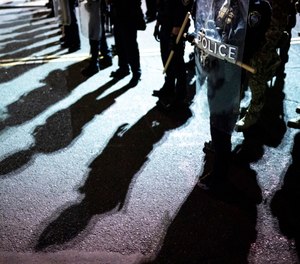
Body cameras, anti-bias training and restrictions on police use of force are all items for proposed funding in DOJ's FY22 budget
The House of Representatives Committee on Appropriations approved their funding bill in July for Commerce, Justice, Science, and Related Agencies for the fiscal year ending Sept. 30, 2022. We spent some time going through the 168-page report to identify emerging trends for federal law enforcement grants in 2022.
Below are some highlights. Note: At the time of publication, the FY22 budget has not been approved by the Senate and therefore not signed by the president. A continuing resolution has been proposed to maintain continuity of service. Expect more to develop as the FY22 budget is finalized and as grants impacting law enforcement departments are released (typically in the spring).
Perhaps the most obvious trend in FY22 proposed funding for the Justice Assistance Grant (JAG) and COPS hiring grant is a focus on police reform . Both programs require jurisdictions to certify through the U.S. Attorney General that the jurisdiction satisfies nine key requirements “aimed at improving police practices.” These practices target issues including racial profiling, excessive force (including choke holds), “no-knock” warrants, and sexual contact between officers and people in their custody .
Several of the nine requirements make reference to the George Floyd Justice in Policing Act , as passed by the House of Representatives on March 3, 2021. As bipartisan talks on this legislation have broken down in the Senate, passage of the George Floyd Act looks unlikely at time of publication. Therefore, it’s unclear whether these requirements will be part of the final appropriations bill. Regardless, all agencies should be on notice that the administration is clearly seeking ways to encourage agencies to adopt common police reform measures and consider this when preparing grant funding requests.
Additional stipulations in the funding request also point to the DOJ’s interest in police reform . The bill requires each applicant’s Byrne JAG formula funds to be spent in the following ways:
JAG and COPS aren’t the only grant programs mentioned in the DOJ FY22 proposed budget, but as with the JAG and COPS funds, the focus is again on police reform and accountability measures. Highlights include:
$35 million for the competitive matching grant program for purchases of body-worn cameras and related expenses
The DOJ FY22 proposed budget isn’t only focused on police reform measures. For programs funded under the Violence Against Women Act , the bill provides $753 million an increase of 48% above fiscal year 2021. This includes new grant programs specifically for communities that are underrepresented and underserved, including the deaf and transgender communities.
For school safety, the bill provides $140 million, an increase of $15 million, to fund the STOP School Violence Act of 2018 . In addition, the bill increases funding for other activities that will address school violence, including strong funding increases for youth mentoring grants and grants for juvenile justice and delinquency prevention. The bill also funds a new program aimed at providing alternatives to incarceration for parents as well as juveniles.
The bill also proposes funding two grant programs aimed at developing new strategies to enhance police/community trust and reduce crime through community approaches. The Public Safety Innovation Grants program would receive $5 million for the development of best practices for, and the creation of, local task forces on public safety innovation. These task forces would be created from partnerships between community-based organizations and other local stakeholders to explore and develop innovative strategies to enhance just and equitable public safety, repair breaches of trust between law enforcement agencies and communities, and enhance officer accountability. And nearly $103 million is allocated for Byrne Discretionary Community Project Grants to prevent crime, improve the criminal justice system and provide victims’ services.
The committee recommended further investigation and research into several emerging issues, including:
Access to mental health services for law enforcement
The next step in budget approval is the Senate’s appropriation bill approval. Stay tuned!
Copyright © 2025 PoliceGrantsHelp.com. All rights reserved.
